How to plant a rainbow: Growing tips for colourful summer salads, beetroot, silverbeet and edible flowers
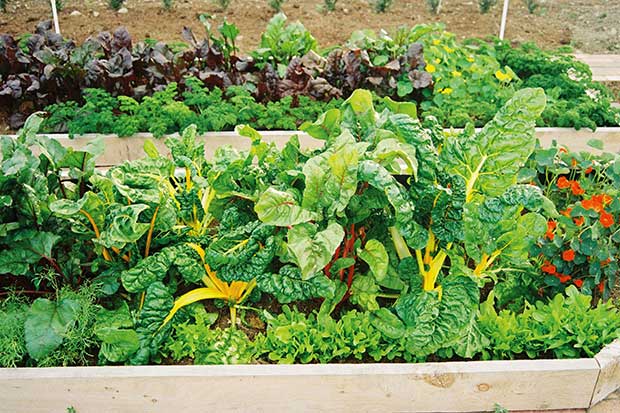
Turn your kitchen garden into a feast of colour.
Words: Jenny Somervell
The traditional Sunday lunch in my childhood was always the same: cold mutton or tinned herring, beetroot, boiled potatoes and lettuce salad. The salad was a heading lettuce, sliced thinly, and decorated with chopped tomatoes, boiled eggs, cucumber and grated carrot. This same salad was reproduced in households all over New Zealand, so predictably in fact that Mary Browne, author of ‘The Salad Garden’ calls it the ‘50s Salad’.
How times have changed! The cook in our household now wants a variety of greens, some mild tasting, some peppery or mustard-flavoured to balance the heat, with colour and flowers and herbs to give character. If the gardener (me) doesn’t provide the makings of a mesclun mix, he trots off to the local farmers’ market instead. That’s not a bad option if you can’t be bothered maintaining the supply, but call me old-fashioned, I prefer home-grown.
For the last 18 months I’ve tried to supply everything the cook may require, and I’ve learnt it’s not enough to go on a maintenance blitz in the garden every 2-3 weeks like I used to. To keep a continuous supply of fresh succulent greens you need to be sowing every week and checking up on them inbetween. A little and often is the rule, and once you get into a routine it takes very little time and it’s fun.
An added bonus has been the visual effect, a delightful rainbow mix of lettuces, mesclun mixes, red beets mingled with colourful flowers which
not only decorate the garden but garnish the plate.
A feast of colour
LETTUCE
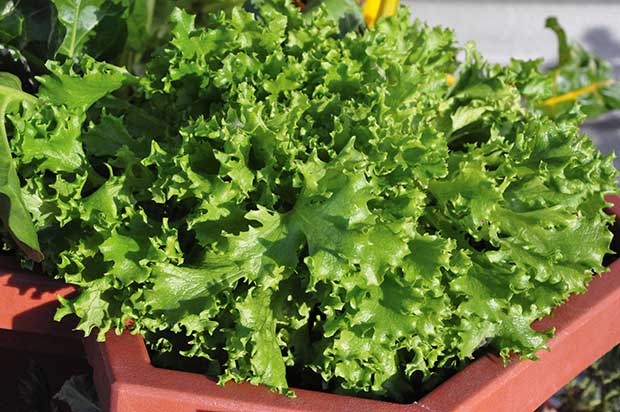
Lettuce ‘Tango’.
A browse through a gourmet seed catalogue will introduce you to the amazing range of colourful salad greens available. The classic green crisp heading lettuce of the 1950s is now just one of many types, in colours from green and lime to tawny to reds and purples. Loose-leaf types form rosettes rather than hearts and tolerate summer heat well. They are also quite hardy out-of-season, and can be picked a leaf at a time for salads for two.
Cos or romaine lettuces are slower growing but worth considering as they stand hot, dry conditions very well. They are great for a small space as their heads are tight and elongated. The long, thick, crisp leaves have a distinct flavour ideal for Caesar salads.
Jenny’s tips: Our favourites have been the beautiful ‘Lollo Rosso’ with its frilly red and green-edged leaves; ‘Royal Oak Leaf’ with notched dark green leaves and good heat and cold tolerance; ‘Tango’ for its full flavour and beautiful lime green colour; and ‘Merveille des Quatre Saisons’ which ranges in colour from magenta to pale green and cream on the inside.
CHARD/SILVERBEET
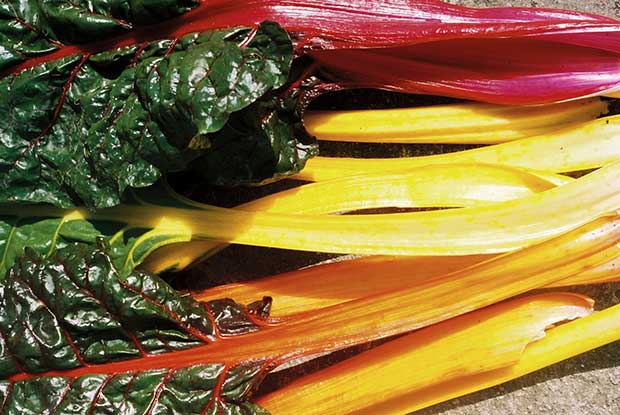
Chard ‘Beet Rainbow Lights’.
A colourful green for both summer and winter use is Rainbow chard, a coloured form of silverbeet with orange, yellow, pink and crimson stalks. It’s highly ornamental, and high in iron, fibre calcium and Vitamins C and A. It can be used in pies, tarts, soups and the leaves used as a wrap for fragrant rice and other fillings. For salads pick the smaller, milder leaves on the inside of the plant. Even the stalks can be used, the colourful stalks sliced thinly look great! They are really useful late winter/spring when greens are scarce.
Jenny’s tip: Lovely as they are, my mistake has been to plant too many. They are prolific and need regular harvesting of the outer leaves to encourage new growth.
BEETROOT
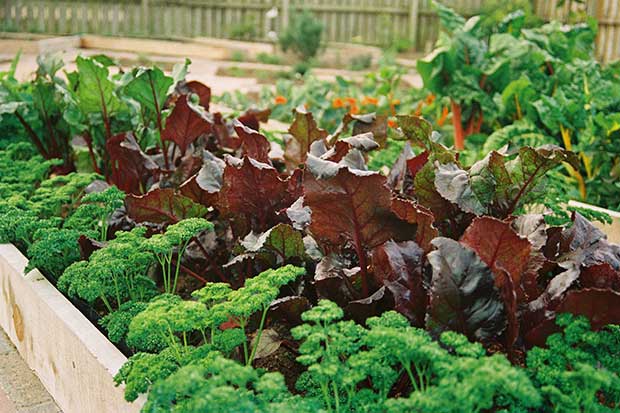
Parsley ‘Green River’ flanked by beetroot ‘Bull’s Blood’.
I also put in regular sowings of the American heirloom beetroot ‘Bull’s Blood’. This has brilliant rich red leaves which are a good standby at any time for colour in salads. As the plants get bigger they can be thinned for tasty baby beets.
ROCKET
I plant rocket (Eruca sativa) with its nutty peppery flavour and mustard ‘Lime Streaks’ so I can use them at any time to ‘pepper up’ a salad. Perennial rocket species Diplotaxis tenuifolia is slower growing and more heat tolerant but I replace it annually as it tends to grow deep spreading roots that then randomly sprout in spring.
MINER’S LETTUCE
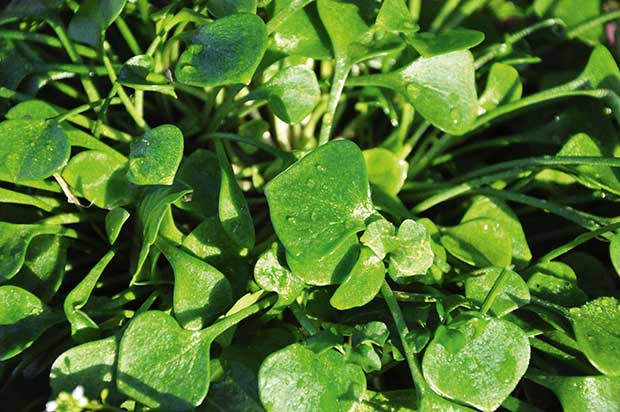
Claytonia perfoliata is a useful salad green for filling in between seasons and crops. It has bright green, dainty leaves which are very succulent with a hint of lemon.
ENDIVE
Another green you won’t find in the supermarket other than as part of a mesclun mix is endive (Cichorium endivia). We grew endive ‘Tres Fine’ for a while, a very lacy variety, for a local restaurant’s salads as they favoured the nutty ‘bite’ of flavour (which can tend to bitter as plants age or in hot weather). It is slower growing than lettuce, stands heat better and tolerates some frost going into winter.
THE FLOWER FACTOR
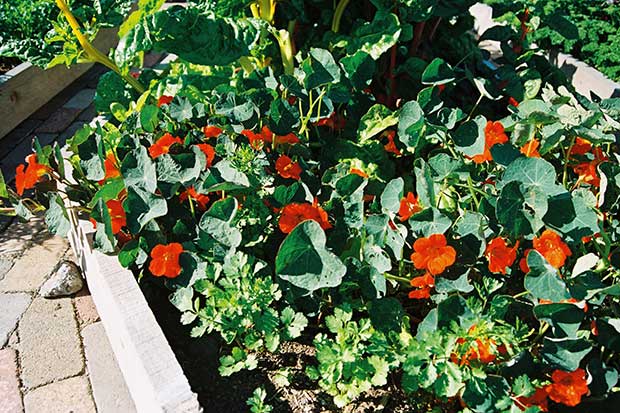
Nasturtium ‘Empress of India’.
Marigolds, violas, calendulas and nasturtiums are all great companion plants to interplant with greens. Nasturtiums and calendulas also act as an insect trap.
Calendulas are easily grown, self-sow readily and their gold petals add a mild, tangy taste scattered over a salad. Nasturtium flowers come in many varieties with vibrant colours. The mild mustard-like flavour is a pleasant surprise to those who haven’t tried them.
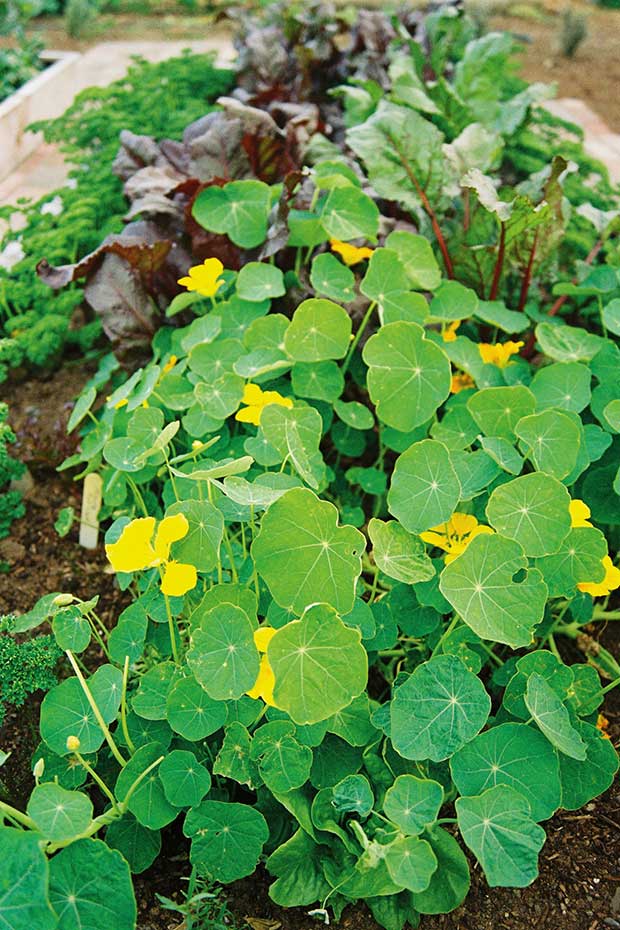
Nasturtium ‘Top Flowering Yellow’ with beet ‘Bull’s Blood’ & Parsley (rear).
Whole flowers may be placed on top, but petals are very attractive sprinkled over salads. The leaves are hotter so use them sparingly for a peppery, watercress-like bite. Add honey or fruit juice to the dressing to temper the bite.
Jenny’s tip: A warning from experience: nasturtiums prefer poorer soils and tend to get rather large and rampant in the vege garden. Personally I like them enough to let them go, but if you don’t, choose non-trailing, compact varieties like ‘Top-Flowering’ or ‘Empress of India’.

Heartsease (Viola tricolour).
Violas are great inter-planted with lettuces, Miner’s lettuce and endive as they like the same conditions and look great in salads (they have a mild, lettuce-like taste). The multi-coloured flowers of heartsease (Viola tricolour) self-seed precociously to produce colourful variations, and I also grow single colours for variety.
Chives flowers can be picked just after opening and added to salads for a mild sweet-onion flavour and pink highlights. Simply pull the individual florets off the flower head and scatter. Garlic chives flowers can be used in the same way for a mild garlic flavour.
The individual yellow florets of dill have a mild dill flavour which is pleasant with cucumber and fish salads.
Rocket flowers can be used long after the leaves become too strong, just sprinkle over green and pasta salads etc.
Getting to grips with mesclun
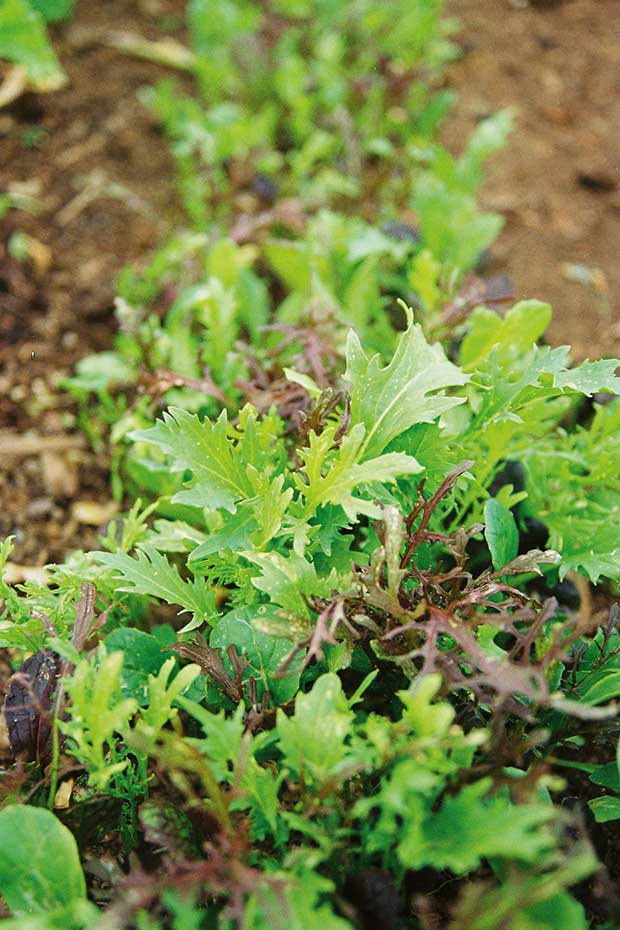
Mesclun, from Latin, ‘to mix or mingle’
Salads of young mixed greens originated in France in the 17th century. Mesclun seed mixes may include lettuce, cress, corn salad, mizuna, rocket, endive, chicory, beets, mustard, spinach, kales and chervil.
Kings Seeds provides eight mesclun mixes with specified ingredients so last spring/summer I grew Mesclun Original before switching to their Oriental Mix in the cool season, for its fast-growing, cold-tolerant brassicas.
I doctored the seed mixes with bulk seed of my favourite varieties, and also tried growing favoured varieties separately, then mixed them after harvesting. This worked better for me for continuity as it suited my somewhat erratic gardening style so even when I missed sowings, the variety of maturity times ensured there was always
something to pick.
SEEDBED PREPARATION
Grow greens in an open position in well-drained loam. On our light soil I find full sun works best in winter but part shade is better in our hot summers.
Prepare a seedbed (raised beds work well) with ample compost at the rate of at least 5kg per square metre. Compost improves texture, drainage, moisture retention and increases nutrient levels.
The ideal ph is neutral to slightly acid so add lime if needed – test for pH – or apply a maintenance dose every three years. Apply half a cup per square metre for sandy soils or one cup for clay soils.
Sow at 10-14 day intervals for a continuous supply. Growing a variety of mesclun mixes and lettuce varieties will spread the harvest as plants mature at different times.
HOW TO GROW MESCLUN
• Bitter-tasting greens are caused by slow growth (too hot, too cold, too thirsty or too hungry) so always maintain even moisture and nutrients. Mulch in summer, especially on light soils, but be aware you will have to wash the mulch ingredients (straw etc) off before eating.
• Extend the growing season in early spring and late autumn by growing under cover in a greenhouse, cloche
or tunnel house.
• Protect from birds (sparrows, blackbirds etc) by using wire netting over high density plastic pipe.
• Lettuce and endive are subject to the same diseases so if possible, spell ground for at least two years from these crops.
• Sow Phacelia tanacetifoila around the garden periphery. It is exceptional for attracting hoverflies and parasitic wasps whose larvae devour and parasitise aphids respectively.
JENNY’S TIPS
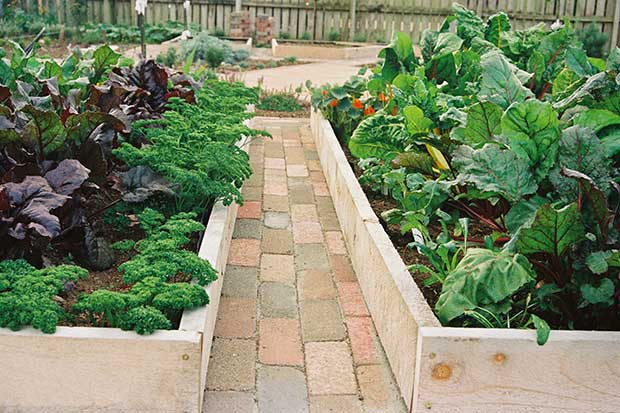
• Bitter-tasting greens are caused by slow growth (too hot, too cold, too thirsty or too hungry) so always maintain even moisture and nutrients. Mulch in summer, especially on light soils, but be aware you will have to wash the mulch ingredients (straw etc) off before eating.
• Extend the growing season in early spring and late autumn by growing under cover in a greenhouse, cloche or tunnel house.
• Protect from birds (sparrows, blackbirds etc) by using wire netting over high density plastic pipe.
• Lettuce and endive are subject to the same diseases so if possible, spell ground for at least two years from these crops.
• Sow Phacelia tanacetifoila around the garden periphery. It is exceptional for attracting hoverflies and parasitic wasps whose larvae devour and parasitise aphids respectively.
Love this story? Subscribe now!
 This article first appeared in NZ Lifestyle Block Magazine.
This article first appeared in NZ Lifestyle Block Magazine.
